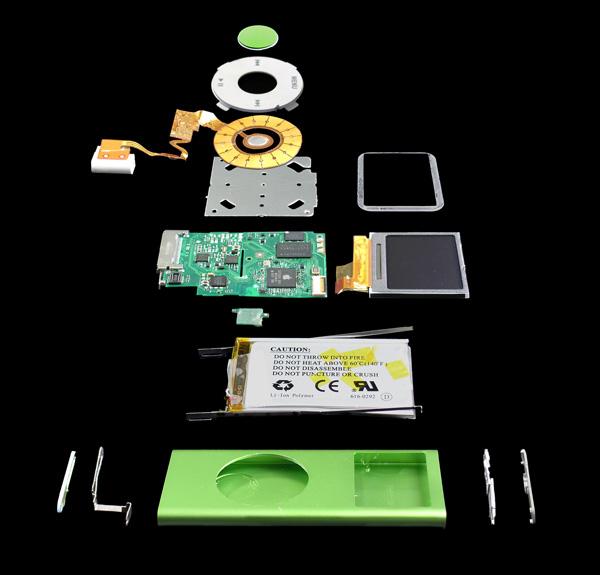Materials cost for Apple's 4GB iPod nano estimated at $72 [u]
A dissection of Apple Computer's new 4GB iPod nano digital music player conducted by iSuppli reveals a new design that delivers reduced cost and greater capability compared to the previous-generation player.
Samsung SoC highlights nano chip content
According to iSuppli, the Samsung SoC, which is based on an ARM Ltd. microprocessor, includes a flash disk controller — a function that previously was implemented in a separate part from Silicon Storage Technology Inc. The firm estimates that the Samsung SoC costs $5.40 compared to a combined cost of $8 for the previous PortalPlayer and SST parts.
In selecting two other key semiconductors for the new iPod nano, iSuppli said Apple apparently sought size and power reductions. The Wolfson audio codec, the WM8750S, is said to be a custom, smaller-packaged version of the company's standard WM8975G used in the first-generation nano. Likewise, the firm said, the Philips PCF50635 power-management IC used in the new design is a smaller-die version of the company's standard PCF50607 employed in the original nano.
Otherwise, the new nano utilizes several of the same semiconductors as the first-generation design. These parts reportedly include Cypress Semiconductor Corp.'s Programmable SoC (PSoC) microcontroller and its CapSense technology that last year replaced Synaptics's technology as the circuitry behind the player's characteristic ClickWheel interface.
"Due to design changes and component price declines, iSuppli estimates that Apple has reduced the Bill-Of-Materials (BOM) cost for the new $199 retail-priced 4Gbyte nano to $72.24, less than the $89.97 that was estimated for a first-generation 2Gbyte nano upon release,†wrote Andrew Rassweiler, teardown services manager and senior analyst for iSuppli.
Where's the video?
iSuppli said that the use of the Samsung SoC was expected, but the lack of video support in that chip — and in the new nano overall — is somewhat surprising given that Apple rivals, most notably SanDisk, are moving quickly to add video capability to flash-memory-based players.
"That lack of video support also may partly explain why the new hard-disk-drive based iPod continues to utilize the same combination of PortalPlayer and Broadcom Corp. chips," the firm said.
iSuppli also conducted an analysis of the new video-enabled, hard-drive-based iPod and concluded that it had no design or supplier changes compared to the previous version, except for a brighter display. The firm said this represents a cost-effective way for Apple to remain competitive pending the release of more innovative products.
"At a minimum, Apple needed this minor product refresh to support the launch of iTunes movie downloads and to prepare for the introduction of Microsoft Corp.'s competing Zune player. But the latest iPod falls very short of being a true video-centric player needed by consumers who want to watch movies, and not just short-form video," wrote Chris Crotty, a senior consumer electronics analyst at iSuppli.
Crotty noted that the third-quarter timing of the launch will keep the market guessing, since Apple still could launch additional new iPods before the holiday season. "Apple also could hold its new introductions until the release of its previewed iTV device, which will enable playback of iTunes video content on televisions through a wireless link," he added.
iSuppli believes Apple's delay in adding video to its flash-memory-based based players and its launching of a new design for its flagship iPod suggest that the company is shifting its focus from portable MP3 players to the living room. Such a shift, it said, also could signal Apple's confidence in its leadership position within the MP3 player market.
Later on Wednesday, AppleInsider will cover a separate iPod nano teardown, complete with images.
 Katie Marsal
Katie Marsal












 Malcolm Owen
Malcolm Owen
 William Gallagher
William Gallagher
 Mike Wuerthele
Mike Wuerthele
 Christine McKee
Christine McKee

 Andrew Orr
Andrew Orr
 Sponsored Content
Sponsored Content








